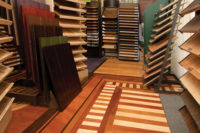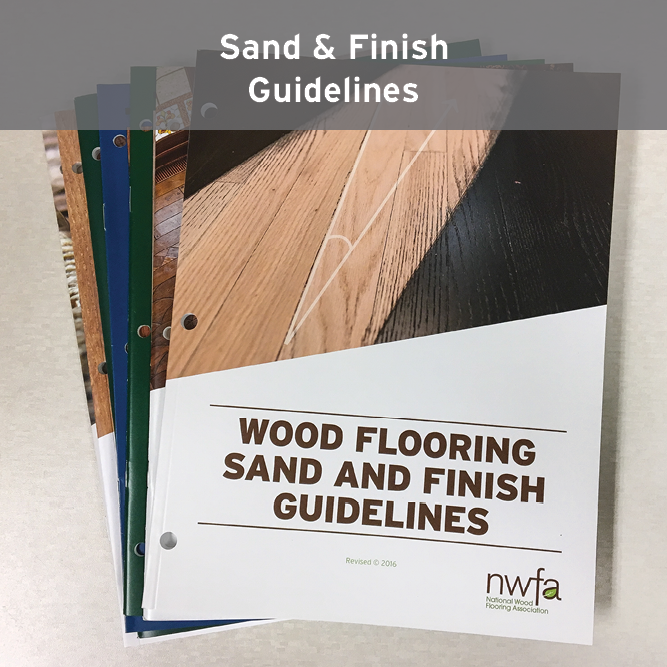Water and Wood Don’t Mix: Hardwood Moisture Management

Hardwood is a product of nature and therefore imperfect. But in her grand scheme, Mother Nature created perhaps the ultimate building material. Consider hardwood’s beauty, variety of species, structural integrity, and overall versatility, especially as it pertains to hardwood flooring.
When a hardwood tree such as oak, maple, hickory, cherry or birch is harvested, the moisture content is about 90%. When the logs are cut at the sawmill, the boards are considered green lumber due to their very high moisture content.
These green boards are sold to manufacturers, including hardwood flooring mills. The mill immediately sorts the lumber into a variety of grades and then stacks them with oak sticks. This evenly separates each layer of boards to allow the air to flow through the stacks of lumber so they can “air-dry” while in the lumberyard. Depending on geographical location, the typical drying season is from late spring to late autumn.
Manufacturing and Moisture
Before a board of hardwood lumber can go into the manufacturing process, it has to be air-dried to 20% moisture content. Under ideal weather conditions this should take about 6 weeks, in some regions a bit longer. The next step is to kiln dry the lumber to about 6% to 8% moisture content. Today’s computer-controlled dry kilns do a very effective job of allowing the manufacturer to regulate this process in a more exacting manner. There are other methods of drying lumber, but the end result needs to be the same.
Once the lumber is properly dried it is ready to immediately go into the production of hardwood flooring. Solid hardwood flooring is milled to its profile on a flooring molder. For engineered hardwood flooring the board is sawn or sliced into top or face veneers (lamellas) in a variety of thicknesses.
The lamellas are laminated to a plywood substrate to create a very dimensionally stable flooring product due to the finished cross ply construction. Whether solid or engineered, the moisture content of the lumber at the onset of production is critical to the successful manufacture of a true and flat product. If the moisture content is not within the acceptable range during production, warping or bowing of the board can result.
Installation and Moisture
Not only does the hardwood flooring ideally need to be around 6% moisture content at the time of installation, it also has to be equalized or balanced to the area and its subfloor. This process is not to be taken lightly.
Proper moisture management is essential for a quality installation, especially when it comes to hardwood flooring. The last thing an installer wants is for excessively dry boards to take on moisture such that the nails or staples that attach the flooring to the subfloor come loose and cause the floor to squeal or pop with normal pedestrian traffic. It can also cause the boards to expand and create cupping or a “washboard” effect.
With excessive moisture at the time of installation, the flooring can actually shrink and create gaps or reverse cupping called “crowning.”
Managing Moisture on the Jobsite
To avoid these potential hazards and pitfalls it is important to acclimate the hardwood flooring to the interior environment and confirm that the subfloor, whether plywood or OSB substrate, is adequately dry. The same is true when gluing or “floating” an engineered hardwood floor to a concrete slab. Use a moisture meter to check the moisture content of both the subfloor and the hardwood flooring.
For guidelines I recommend you refer to the National Wood Flooring Association’s “Hardwood Flooring Installation Guidelines.” It provides details on both topics. Hardwood flooring manufacturers usually provide detailed instructions for their specific products. It is also important to refer to their instructions as wood species and flooring type (i.e. solid vs. engineered) among other factors can affect a floor’s moisture tolerance.
The NWFA recommends that hardwood flooring not be installed or even delivered to the jobsite until the building is enclosed and temperature and humidity conditions match those that will be present once the building is occupied. And to satisfy the acclimation requirement, the NWFA further recommends that the hardwood be allowed to adjust to the interior heated/air conditioned environment for at least five days before installation.
Proper Moisture Differential
Don’t be misled by a subfloor appearing dry on the surface; it may still have elevated moisture within the panels. The industry recommends testing wood subfloor moisture in at least 20 locations per 1,000 square feet and averaging the results.
Once the hardwood flooring is acclimated and the subfloor is adequately dry, the moisture difference between the two should not exceed 4% for solid strip flooring and less than 3” wide, and 2% for solid flooring 3” in width or greater. Engineered hardwood flooring is different due to its inherent structural integrity. It’s important to check the manufacturer’s requirements listed in their installation instructions as they may vary based on face or lamella species, substrate materials, width, and thickness. Suffice it say, engineered hardwood flooring typically requires less acclimation time, and it also reacts less to moisture differential than does solid hardwood flooring.
Now you have a grasp about how “water and wood don’t mix,” truly an adage to live by in the hardwood flooring business. Your goal is to achieve a quality installation by expertly installing properly manufactured hardwood flooring over a suitable subfloor. In the final analysis this is not a complicated process when you follow industry recommended guidelines. To avoid the high cost and frustrations normally associated with callbacks and unhappy customers, invest your time at the onset to allow for proper acclimation and a dry subfloor.
By being diligent in your attention to moisture management at the time of installation, the customer will be happy, you will be happy, and repeat business will surely come your way!
Looking for a reprint of this article?
From high-res PDFs to custom plaques, order your copy today!







